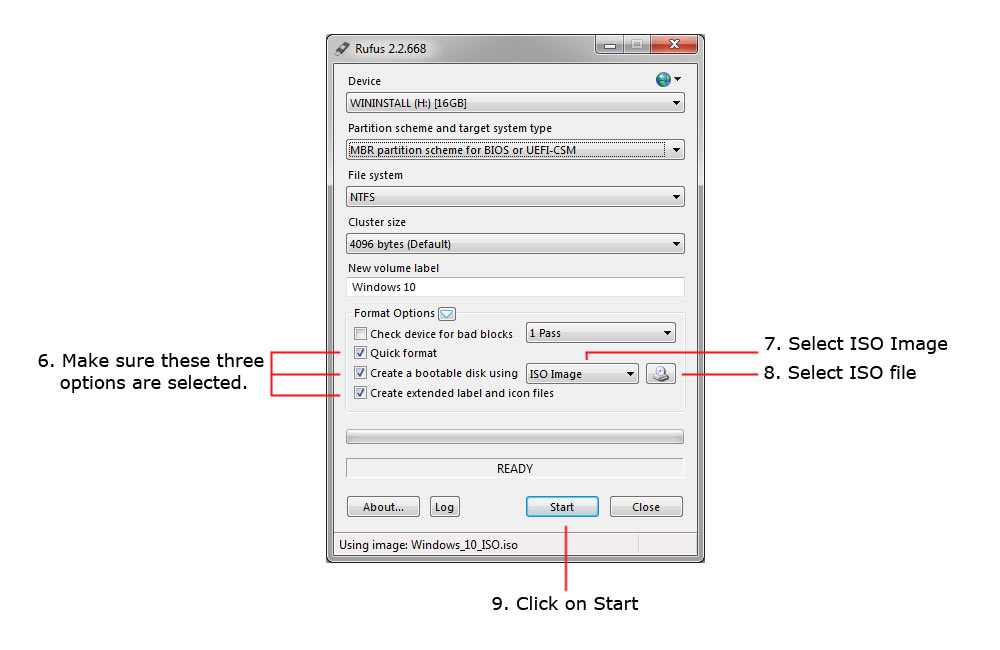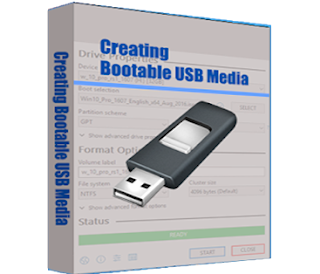

- #CREATE A BOOTABLE USB DRIVE WINDOWS 7 USING RUFUS HOW TO#
- #CREATE A BOOTABLE USB DRIVE WINDOWS 7 USING RUFUS LICENSE KEY#
- #CREATE A BOOTABLE USB DRIVE WINDOWS 7 USING RUFUS INSTALL#
- #CREATE A BOOTABLE USB DRIVE WINDOWS 7 USING RUFUS UPDATE#
- #CREATE A BOOTABLE USB DRIVE WINDOWS 7 USING RUFUS WINDOWS 10#
#CREATE A BOOTABLE USB DRIVE WINDOWS 7 USING RUFUS INSTALL#

If you want a legacy BIOS but want to stick to Microsoft’s official tool, the old Windows 7 USB/DVD tool is also a good choice.
#CREATE A BOOTABLE USB DRIVE WINDOWS 7 USING RUFUS HOW TO#
How to Create a Windows 10 Bootable USB fro ISO via the Windows 7 USB/DVD Download Tool (Legacy) Rufus will now create a Windows 10 USB in the legacy format. ✔ Create a bootable disk using: ISO image (here you need to select your 64-bit Windows 10 ISO file) ? New volume label: Windows 10 Legacy Boot USB ? Partition Scheme and target system type: MBR partition scheme for BIOS or UEFI-CSM The settings for a Rufus bootable USB that’s compatible with Legacy BIOS versions are quite different.
#CREATE A BOOTABLE USB DRIVE WINDOWS 7 USING RUFUS UPDATE#
? By converting an official Windows Update ESD file into ISO format ? From an unofficial source (not recommended)

There are several ways you can obtain an ISO: It can also be better if you don’t have enough space on your C:/ drive for the Media Installation Tool to function. For example, if you followed our how to download Windows 10 ISO files guide and have a disc image lying around already. The in-built Windows 10 download tool is good enough, but there are some instances where you might want to use third-party tool Rufus.

How to Put Windows 10 on a USB Drive via ISO with Rufus (Legacy or UEFI) When everything has been written to the drive, the Media Creation Tool will display the message “Your USB flash drive is ready”. The download may take some time, depending on your internet connection, the speed of your hard drive, and the speed of your USB stick.
#CREATE A BOOTABLE USB DRIVE WINDOWS 7 USING RUFUS LICENSE KEY#
Check your license key to see if you want a Windows 10 Home or Windows 10 Pro download, and select 64-bit or 32-bit. When you install Windows 10 to a USB, Microsoft asks you to choose the system’s architecture, language, and edition. Choose a system architecture for your Windows 10 USB.Click “Create installation media for another PC” and click “Next”. When the Media Creation Tool boots, it’ll ask you to choose whether to create installation media this PC or another one. Use the Windows 10 bootable USB tool to create media for another PC.Click the relevant “Download tool now” button and open the file. Once there, decide if you want your Windows 10 boot stick to install a 32 or 64-bit version of the OS (64-bit is a safe bet for most people). The Windows 10 Media Creation Tool can be grabbed from Microsoft’s official site, and you shouldn’t obtain it from anywhere else. Download the Windows 10 Media Creation Tool.The Media Creation Tool cuts out some of the licensing annoyances in the setup process. This is the Microsoft-recommended route to put Windows 10 on a USB drive, and for good reason.


 0 kommentar(er)
0 kommentar(er)
